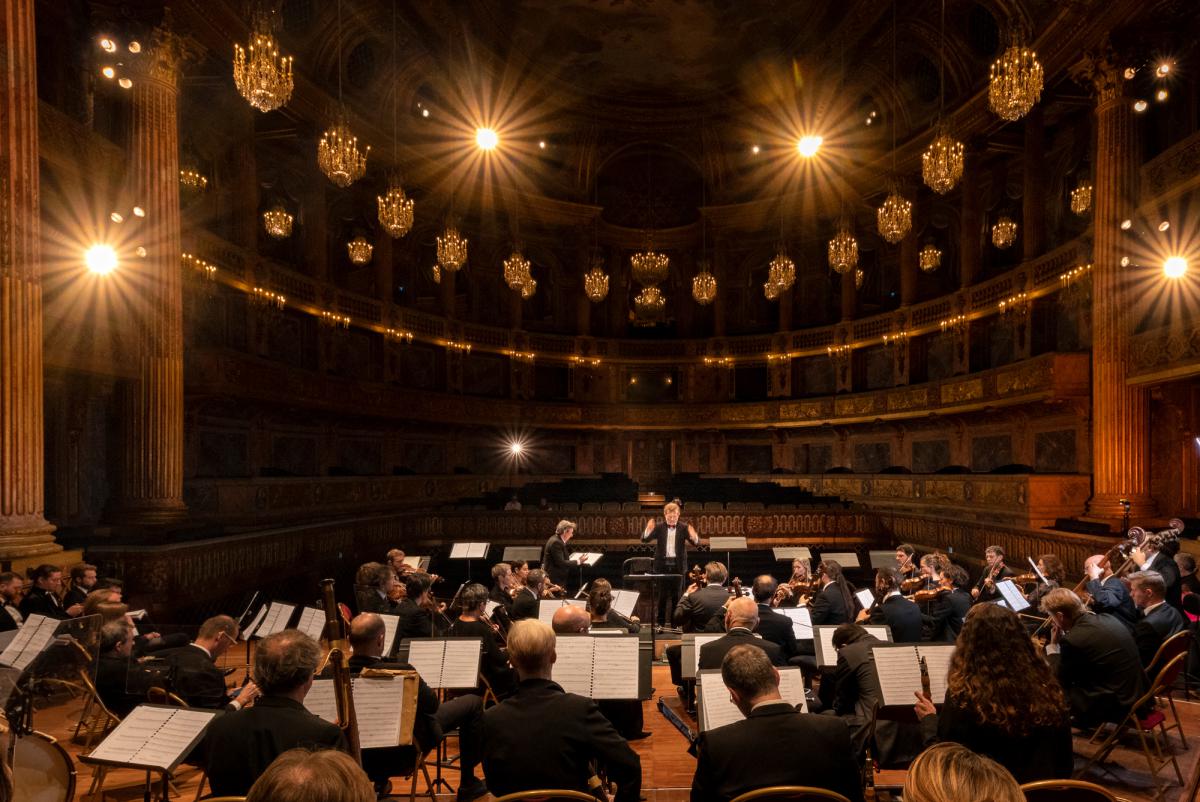First steps towards a French baroque music centre
1987
The Culture Minister asked Vincent Berthier de Lioncourt and Philippe Beaussant to conduct a feasibility study for the creation of a musical institution in Versailles. The idea was both simple and compelling, namely to return French baroque music to the Palace, and bring back to life its grandeur, authenticity, form and style. This meant pooling the means to revive and promote France’s 17th and 18th century musical legacy, and involving research, publishing, coaching and the stage performances. The CMBV was to organise yearly Grandes Journées celebrating major composers, the first focusing on the tri-centenary of the death of Lully.
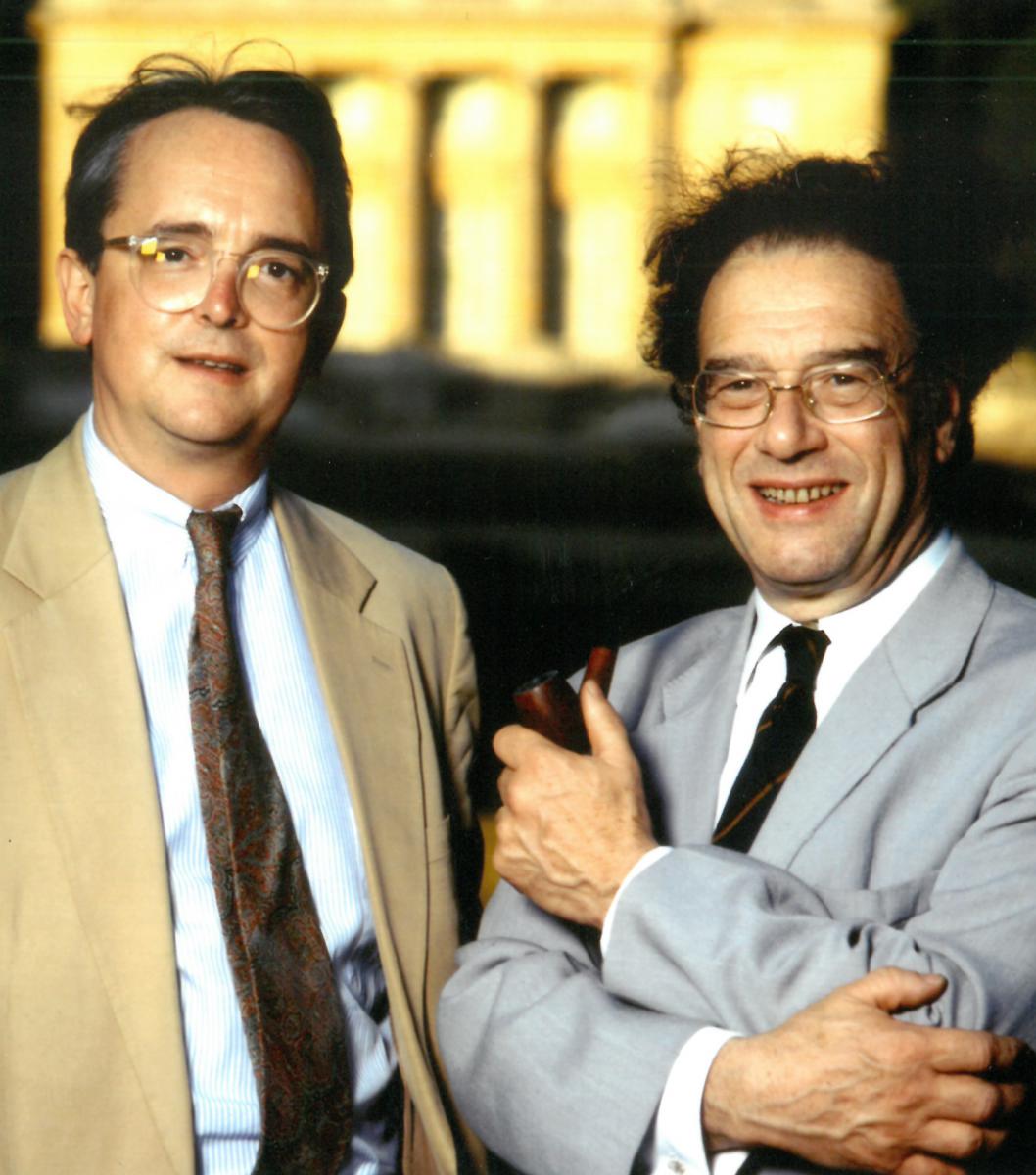
The creation of the Centre de musique baroque de Versailles
1988
The decision was made to create the Centre de musique baroque de Versailles based on a multi-year partnership agreement with the Ministry of Culture and local authorities, and sponsorship from Alcatel Alsthom. Founder Vincent Berthier de Lioncourt was appointed Director. From October onwards Mardis Musicaux concerts were held in the Royal Chapel, performing vocal and instrumental chamber music. Philippe Beaussant published his famous book Vous avez-dit baroque ? The inauguration was highlighted by three events, namely Les Journées Marc-Antoine Charpentier, a production of Rameau’s Platée conducted by Jean-Claude Malgoire, CMBV President, and an international baroque dance event.
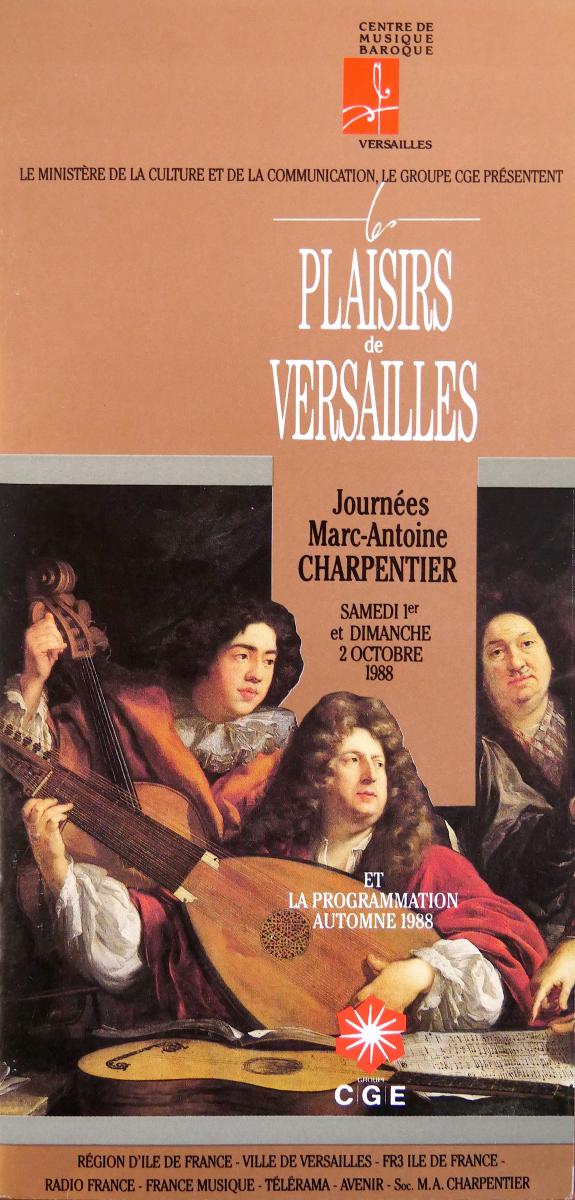
Creation of a research workshop; the Chantres Choir School
1989
A French baroque music research workshop was set up by Jean Duron to publish French heritage music, teach music theory, offer guidance to university students scientific guidance, share knowledge (via lectures, publications, joint projects, etc.) and input CMBV repertoires.
From the historic link with the Les Pages de la musique du Roi came the idea of creating a choir school. Les Chantres, a male choir was born, paving the way for a children’s choir. The CMBV contributed to the official bicentenary celebrations of the French revolution with its Grandes Journées - 1789 à Versailles.

Creation of the Studio Versailles-Opéra and the Pages choir; Grandes Journées spotlight on Michel-Richard de Lalande
1990
Inauguration of a children’s choir school, Les Pages. The Studio Versailles-Opéra, headed by René Jacobs and Rachel Yakar, offered coaching in baroque opera to young professional musicians. The CMBV’s Grandes Journées Michel-Richard de Lalande brought together specialists in 17th and 18th century repertoires and celebrated the revival of this great baroque composer.
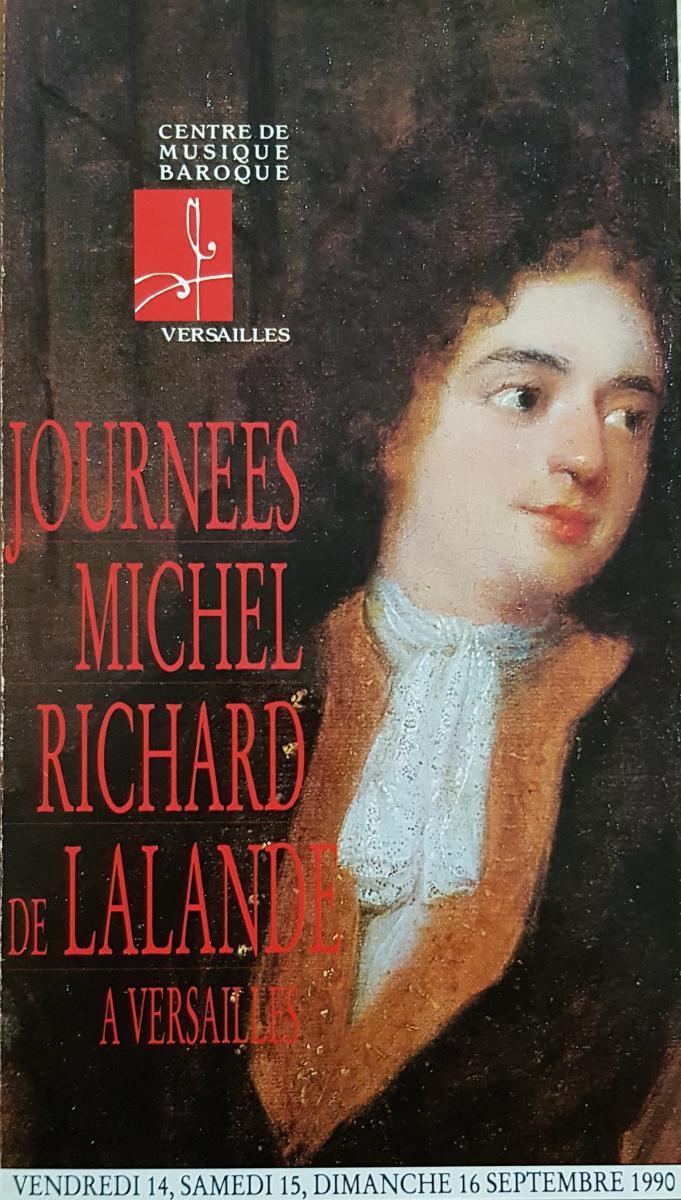
Philidor is born
1991
The French baroque music research workshop acquired an archive department in conjunction with the CNRS to build its Philidor data base.
The choir school started holding concerts every Tuesday in the Palace Royal Chapel and in the Lycée Hoche chapel. Samedis musicaux concerts featured 18th century instrumental French court music. The September Grandes Journées featured Mozart’s early music, with four themes: Mozart in Versailles, Mozart and Goldoni, Mozart and choir schools, Mozart and his contemporaries in France.
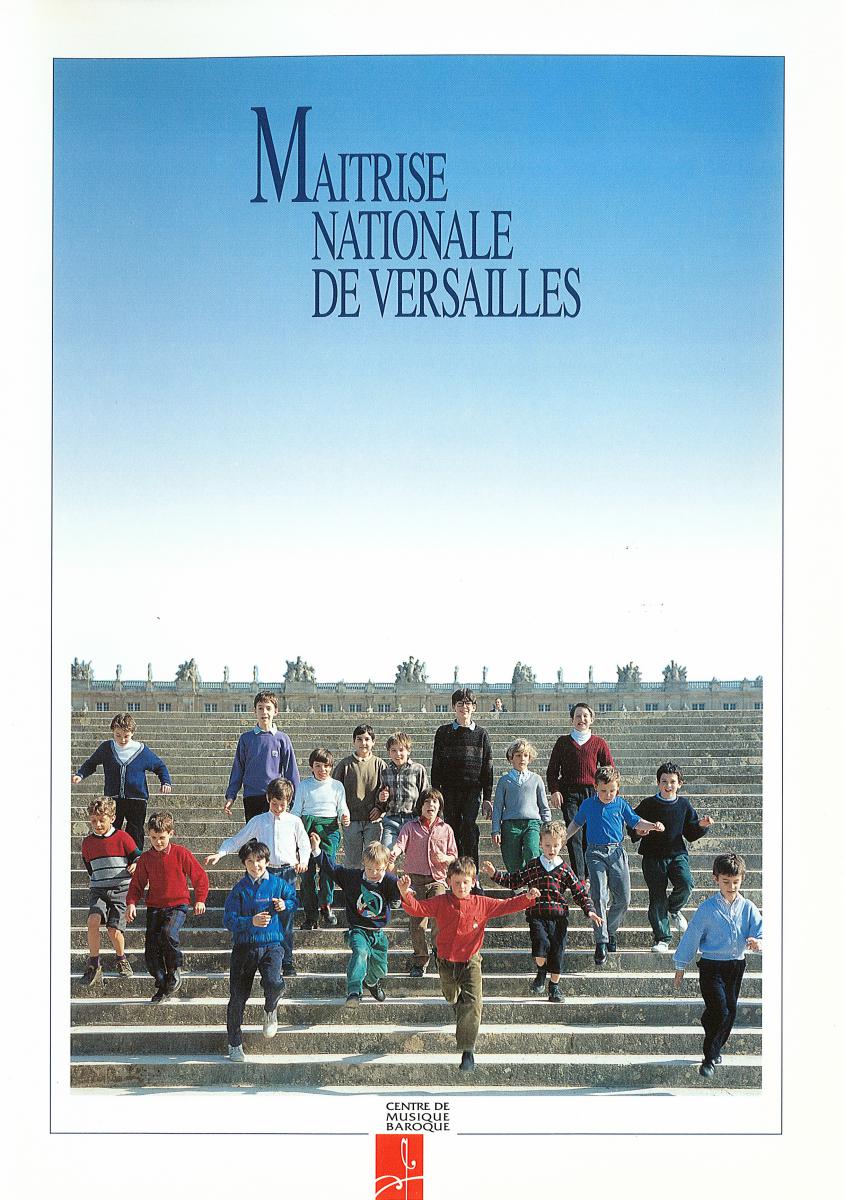
First publications, and the inauguration of a special library
1992
Éditions du Centre de musique baroque de Versailles brought out its first two publications - Dialogus de Anima (by Henry Du Mont) and Mors Saülis et Jonathae (by Marc-Antoine Charpentier). A library was set up to input research and help meet production and teaching requirements. The research workshop joined forces with the CNRS research unit (URA 1516). The first international symposium was co-organised (plainsong and liturgy in France) with the Royaumont Foundation. The choir school, headed by Olivier Schneebeli, embarked on its first world tour, performing in Mexico City, Seville and Lisbon for the fifth centenary of the discovery of the New World by Christopher Columbus.
The Grandes Journées d’automne focused on baroque composer Henry Du Mont.
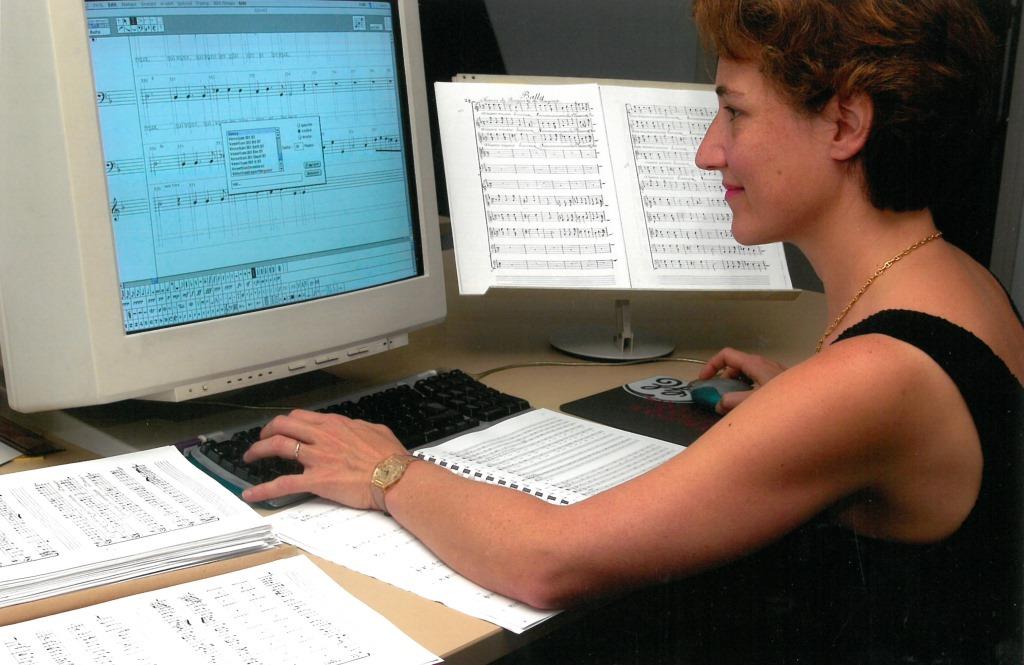
The CMBV branches out; Grandes Journées spotlight on André Campra
1993
The CMBV took to the international stage, with a programme of musical and scientific events outside France, including conferences and workshops in Canada, music and coaching sessions in Prague and a baroque festival in Portugal with the Fondation Gulbekian. Marc Minkowski took over from René Jacobs at the Studio Versailles-Opéra. The Grandes Journées celebrated the artistic genius of André Campra. Jean-Claude Malgoire recorded Campra’s Requiem and Miserere with the Pages Royal Chapel choir. It was the first in the Musique à Versailles series brought out by the CMBV to promote 17th and 18th century French composers.

Grandes Journées spotlight on Jean-Philippe Rameau
1994
Gathering momentum, the CMBV put on a season of 35 concerts based on three themes – music in the time of Henri IV and Louis XIII (programmes drawn directly from CMBV research), royal banquet music to accompany the Versailles museum exhibition, and music for Holy Week (the great baroque musical tradition celebrating the apogee of the liturgical year). The season closed with 12 splendid concerts of chamber music and sacred and operatic music by composer Jean-Philippe Rameau.
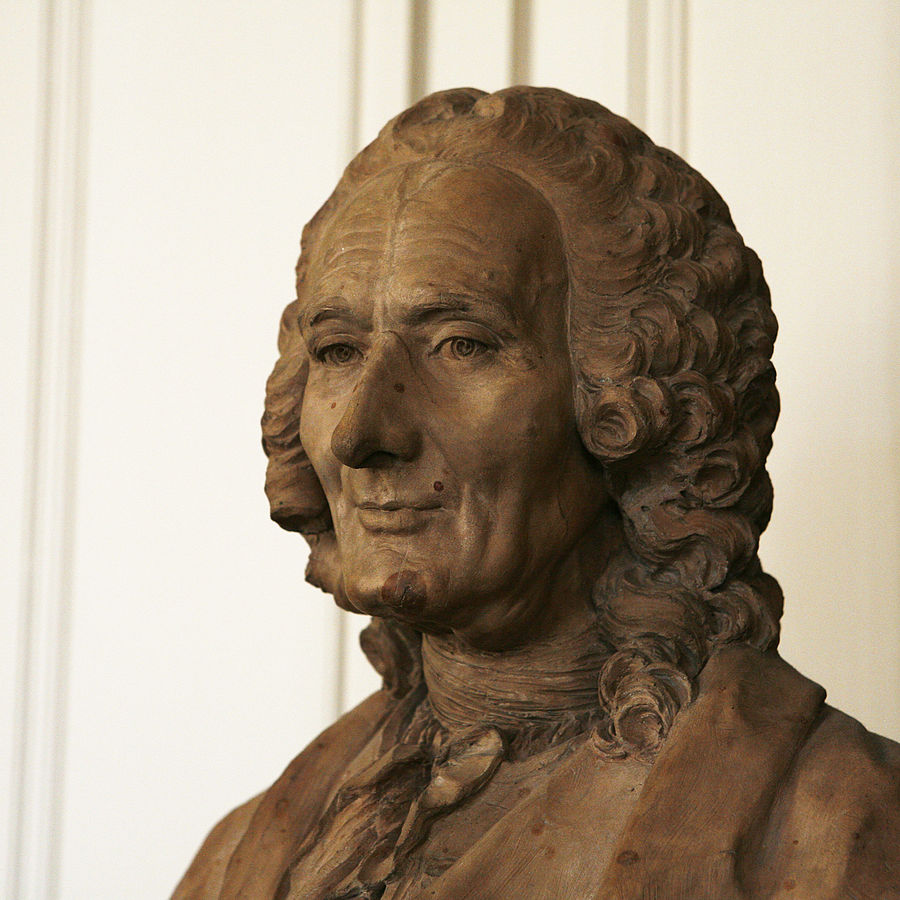
Grandes Journées spotlight on Sébastien de Brossard
1995
Philippe Lenaël, specialist in baroque gesture, took over from Marc Minkowski at the Studio Versailles-Opéra, which branched into gesture, dance and declamation. Les Pages & les Chantres attended the Lisbon festival, performing Marc-Antoine Charpentier’s Histoires sacrées. The music from the film L’Allée du Roi by Nina Companeez came from recordings and performances made at the CMBV. The Grandes Journées d’automne events spotlighted Sébastien de Brossard, and a series of publications, records and symposiums backed the revival of this hitherto unknown composer. For this occasion, Les Editions du Centre de musique baroque de Versailles published its first book by Jean Duron on the works of Sébastien de Brossard.
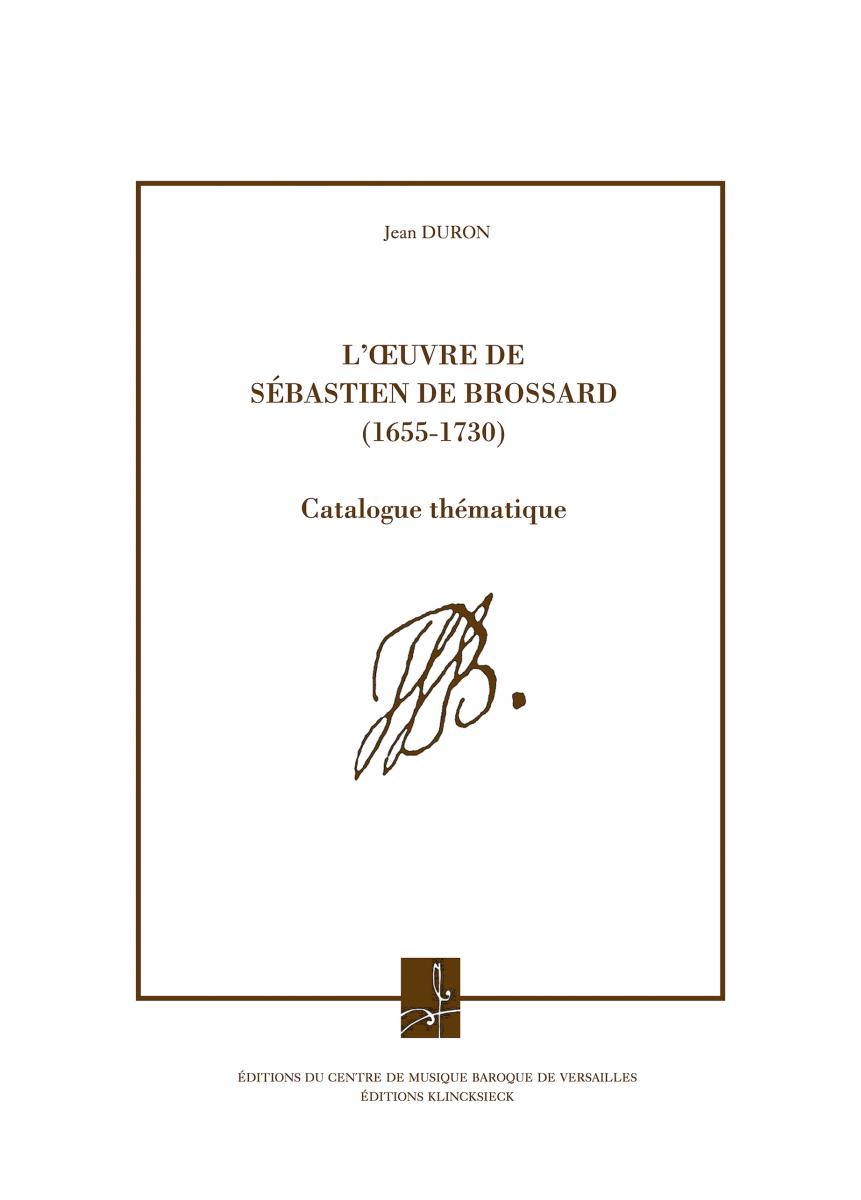
the CMBV moves into the Hôtel des Menus-Plaisirs du Roy; Grandes Journées spotlight on Jean-Joseph Cassanéa de Mondonville
1996
Hitherto split across three venues in Versailles, the various departments of the Centre de musique baroque moved into the Hôtel des Menus-Plaisirs du Roy in 22 Avenue de Paris. The premises could accommodate musicians, orchestras and researchers working on French music right beside the Palace. The French music & theatre critics union voted the Centre de musique baroque de Versailles ‘1996 musical personality of the year’. Undermined by losing its sponsorship from Alcatel Alsthom, the CMBV was formally linked by to the public establishment of Versailles (Etablissement Public du musée et du domaine national de Versailles).
The Automne Musical festival celebrated the composer Mondonville.
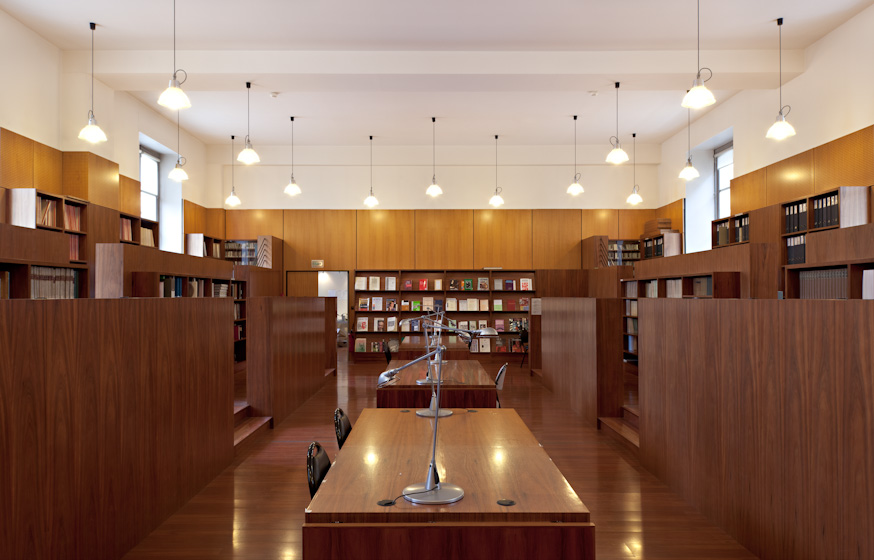
The CMBV ten years on
1997
The CMBV was now ten years old! Ten concerts were organised featuring conductors and ensembles regularly contributing to events between 1987 and 1996. Ten composers were showcased during the Grand Journées, namely LULLY, CHARPENTIER, COUPERIN, LALANDE, DU MONT, CAMPRA, RAMEAU, BROSSARD, MONDONVILLE and MOZART.
Les Pages & les Chantres opened to female choristers and was awarded the Liliane Bettencourt prize for choral music by the Académie des Beaux-Arts.
Vincent Berthier de Lioncourt left his post as Director of the CMBV to head the new department of music & theatre at the Establishment of Versailles, to be replaced by Christian Oddos.
Studio Versailles-Opéra was obliged to close for economic reasons.
Jean-Claude Malgoire resigned as CMBV President and was succeeded by Hubert Astier.
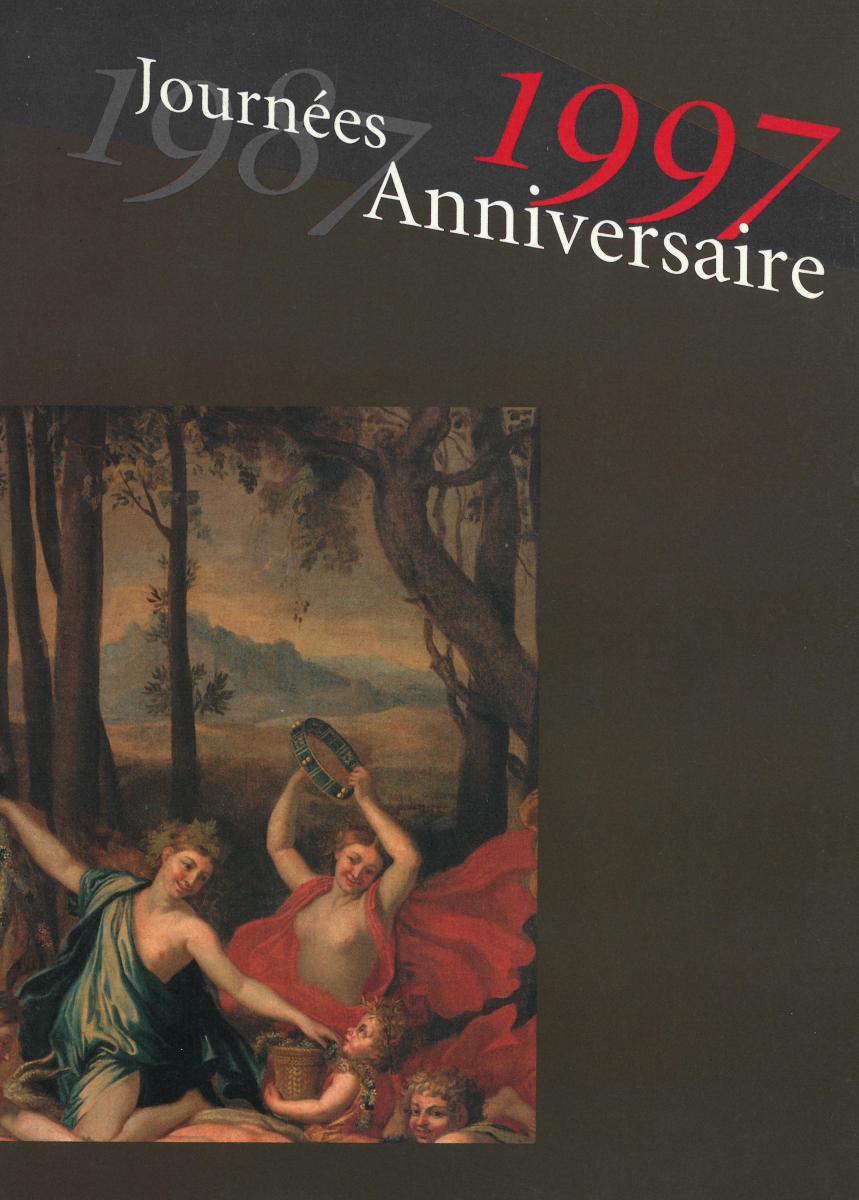
Grandes Journées spotlight on Louis-Nicolas Clérambault
1998
Les Pages & les Chantres participated in the stage performance of Mozart’s Magic Flute produced by l’Atelier Lyrique de Tourcoing and directed by Jean-Claude Malgoire. The Establishment of Versailles asked the CMBV production department to run the spring and summer music, theatre and dance events (Les Nouveaux Plaisirs and Les Impromptus de Versailles). The research workshop saw the death of one of its founder members, distinguished musicologist Jean Lionnet (1935-1998). The Grandes Journées featured Louis-Nicolas Clérambault, and Fayard published a work by Catherine Cessac (CMBV researcher) which shed fresh light on the life and work of Clérambault.
Dufourcq succeeded Hubert Astier as CMBV President.
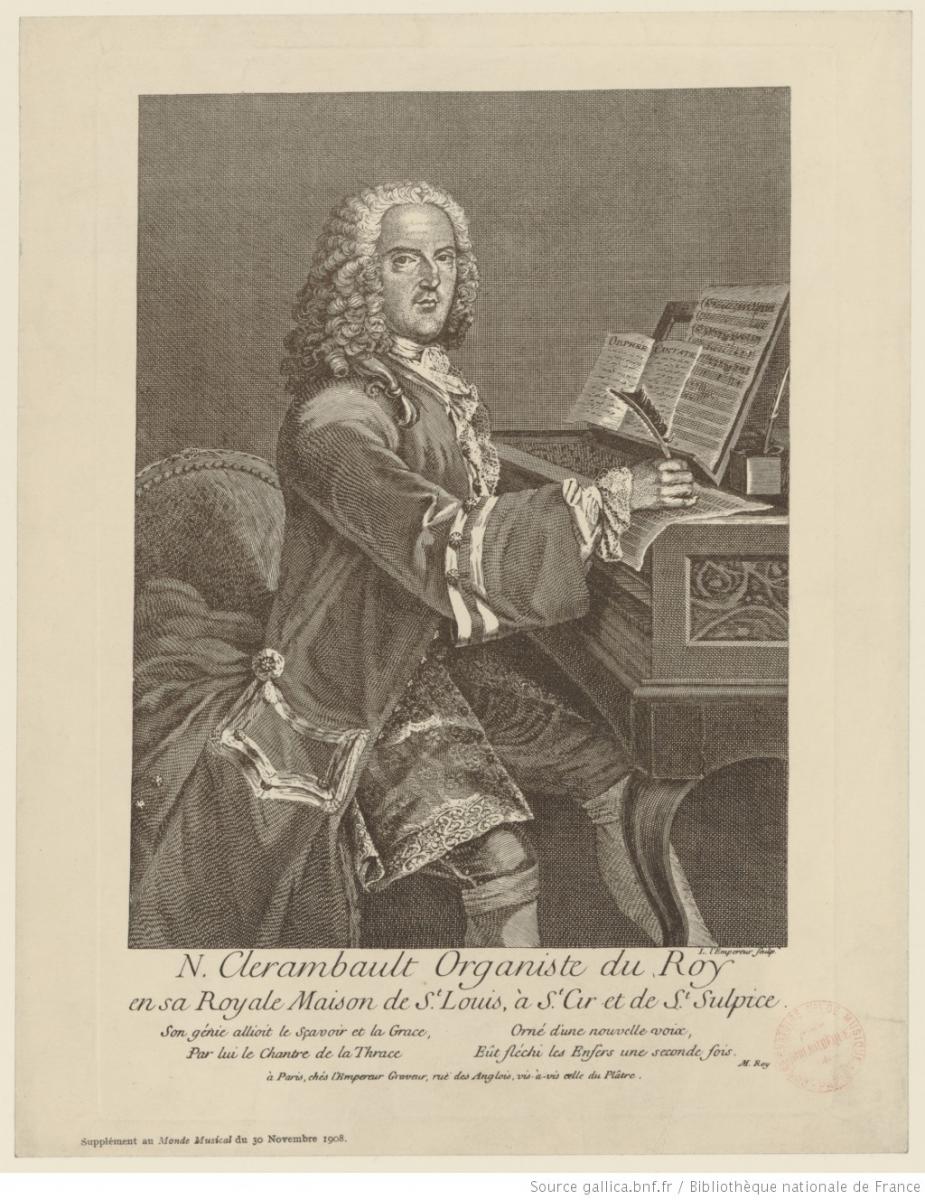
European prize for Culture; Grandes Journées spotlight on Henri Desmarest
1999
The CMBV launched its own website. The Pro Europa cultural foundation paid tribute to the CMBV for its decade of efforts to revive and promote French baroque music, for its historically researched concerts, its unremitting high standards and growing reputation throughout Europe. The CMBV offered its research material to libraries and conservatoires in Hungary, Slovenia, Yugoslavia, the Czech Republic, Moldavia and Lithuania, with support from the AFAA and the Fondation de France. The Grandes Journées featured 21 concerts and stage productions celebrating the distinguished composer Lorrain Henry Desmarest. The event was backed by an international symposium, 2 public lectures, teaching projects, 3 records and several radio and TV broadcasts.
Christian Oddos left the CMBV. Vincent Berthier de Lioncourt, returned from the Establishment of Versailles to take up the post of Director, which he had occupied at the start of the CMBV in July 1987.
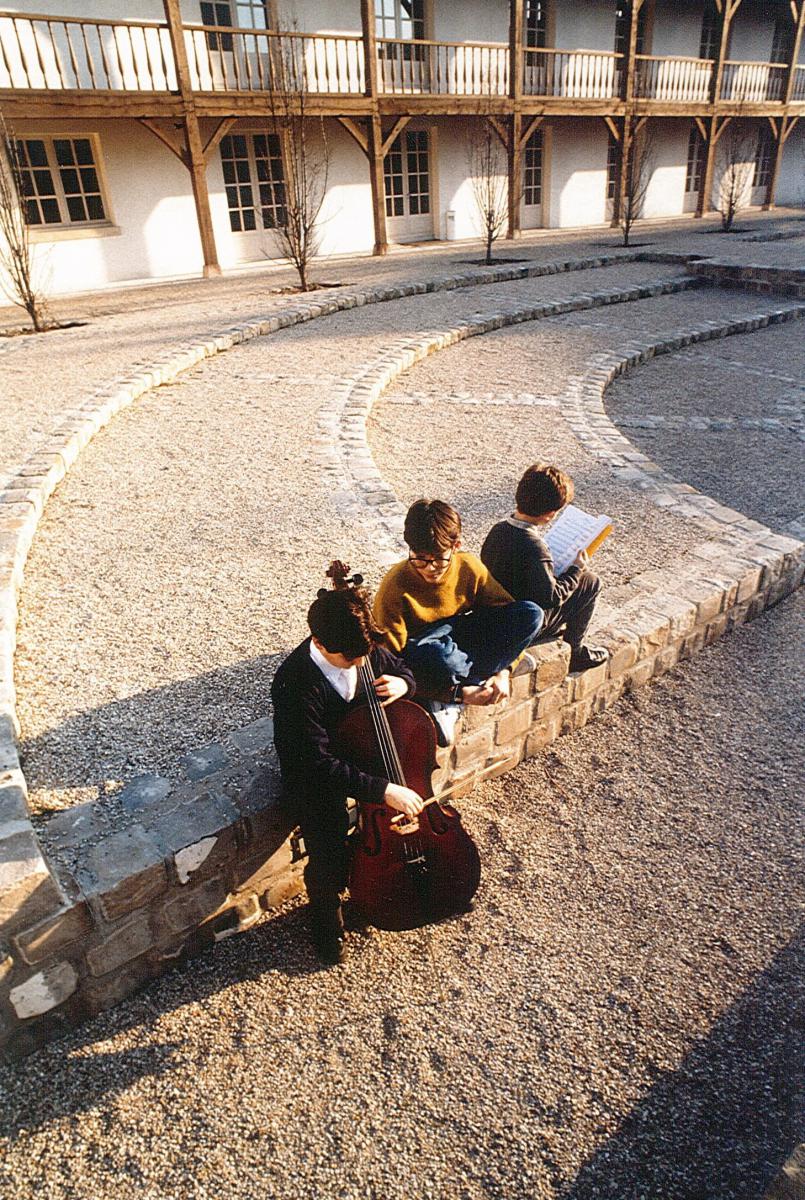
The research workshop becomes a CNRS Joint Research Unit (UMR 2162); Grandes Journées spotlight on François Couperin
2000
The CMBV broadened its remit, inviting around 20 musical ensembles to its studios to explore French baroque repertoires. The new millennium saw a grand total of 200 days of study and rehearsal. The research workshop was made a Joint Research Unit (UMR 2162) by the CNRS. As a tribute to Jean-Baptiste Lully, the CMBV arranged for commemorative plaques to adorn the composer’s two Paris residences (in rue Boissy d'Anglas and rue des Petits Champs). The Automne musical programme included a preview of ballet music from the film Le Roi danse by Gérard Corbiau. The Grandes Journées featured François Couperin and the CMBV performed the composer’s entire works in 28 concerts alongside the Festival d’Art Sacré de Paris and the Radio-France music season.
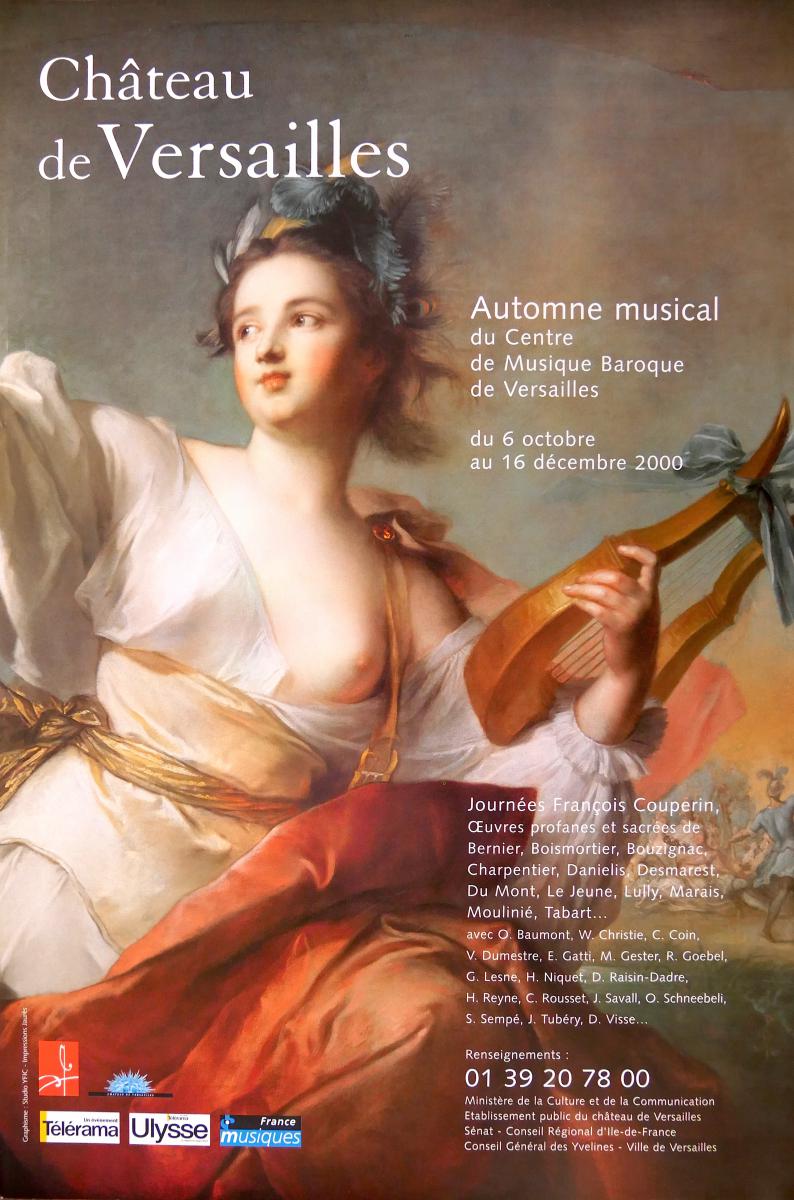
Grandes Journées spotlight on Michel-Richard de Lalande
2001
Keen to disseminate its work, the CMBV continued to distribute its music scores across central Europe (Slovakia, the Czech Republic, Ukraine and Russia) with the support of the AFAA.
The CMBV Choir School worked on a major teaching programme organised by ADIAM 78 for choirs in les Yvelines. Les Pages & les Chantres helped produce Charpentier’s Messe à quatre chœurs, conducted by Olivier Opdebeeck. Collaboration commenced with the Ministry of Education to promote choral singing in schools in conjunction with Créteil IUFM, teachers from Paris and the Conservatoires of Versailles, Aubervilliers and the Vallée de Chevreuse. A large international symposium on Michel-Richard de Lalande inaugurated the year’s Grandes Journées d’automne.
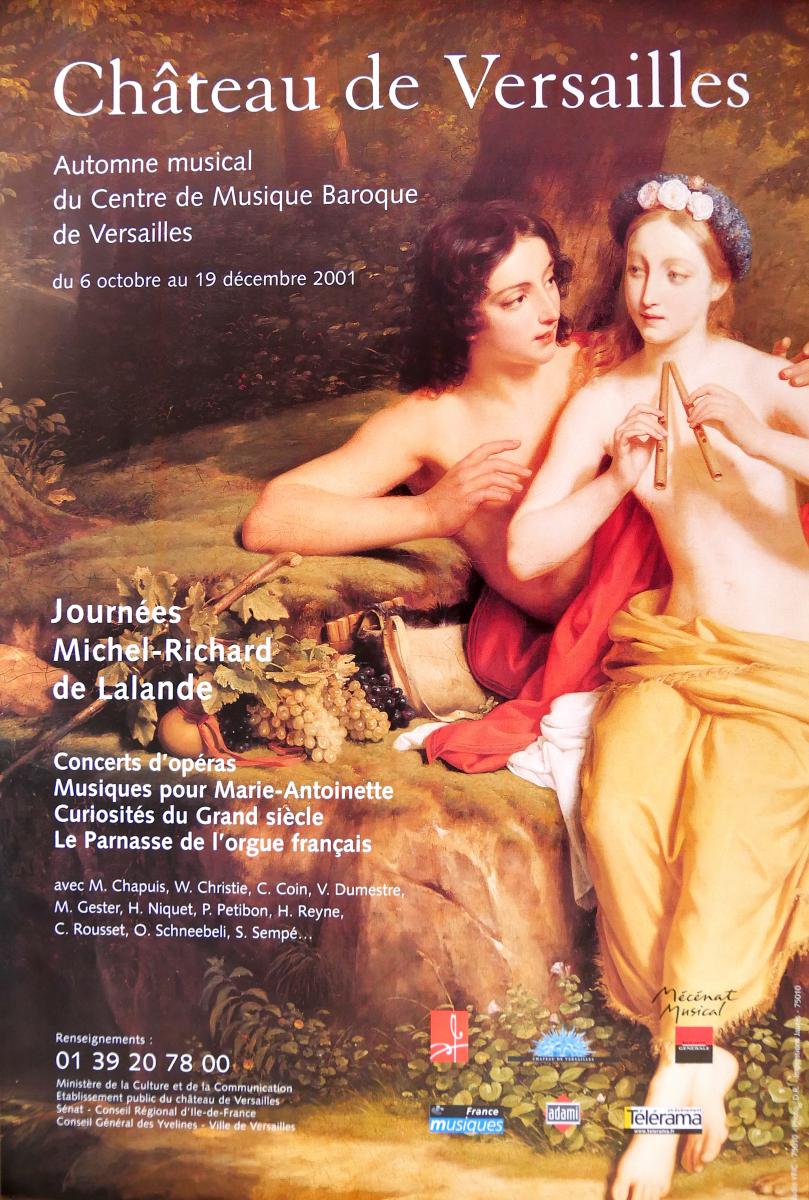
Grandes Journées spotlight on François-Joseph Gossec
2002
The CMBV Choir School toured Germany, which took les Pages & les Chantres to the Bach Festival in Leipzig to perform major French baroque works - Lalande’s early motets and André Campra’s Ad Majorem Dei Gloriam mass.
Collaboration with the Fondation de France to promote CMBV publications expanded to other European conservatoires, in Luxembourg, Brussels, Namur, Gand, Oslo and Stockholm. Alongside this, the CMBV agreed to co-publish its scientific publications with Liégeois Mardaga.
The Grandes Journées spotlighted François-Joseph Gossec. This late baroque ‘pre-romantic’ composer promoted music composed during the reign of Louis XVI (the Grandes Journées having hitherto concentrated on music under Louis XIV and Louis XV). Gossec was a foremost musician in his time, producing an extraordinarily wide range of genres and styles, which resound magnificently in the Palace of Versailles today. An international symposium was also held on this composer.

Grandes Journées Louis XIII
2003
In 2003, the CMBV produced or co-produced 146 French baroque music concerts (56 in the city or Palace of Versailles, and 90 in other venues in France and abroad). It also published 27 volumes of scores and 7 books. Performances resulted in 16 recordings by leading record labels (EMI Virgin Classics, Alpha, K617, Glossa, Ricercar, etc.). The research department organised 2 international lectures, the first featuring Louise-Bénédicte de Bourbon, Duchess of Maine (1676 – 1753) a noted patron of the Arts. It explored the artistic trends, ideas and cultural events which flourished around the Duchess in Sceaux. The second conference was devoted to the air de cour during the reign of Henri IV and Louis XIII, and explored musical practices from a historical, sociological, literary and academic standpoint. The Grandes Journées bore the title "Louis XIII musicien, et les musiciens de Louis XII".
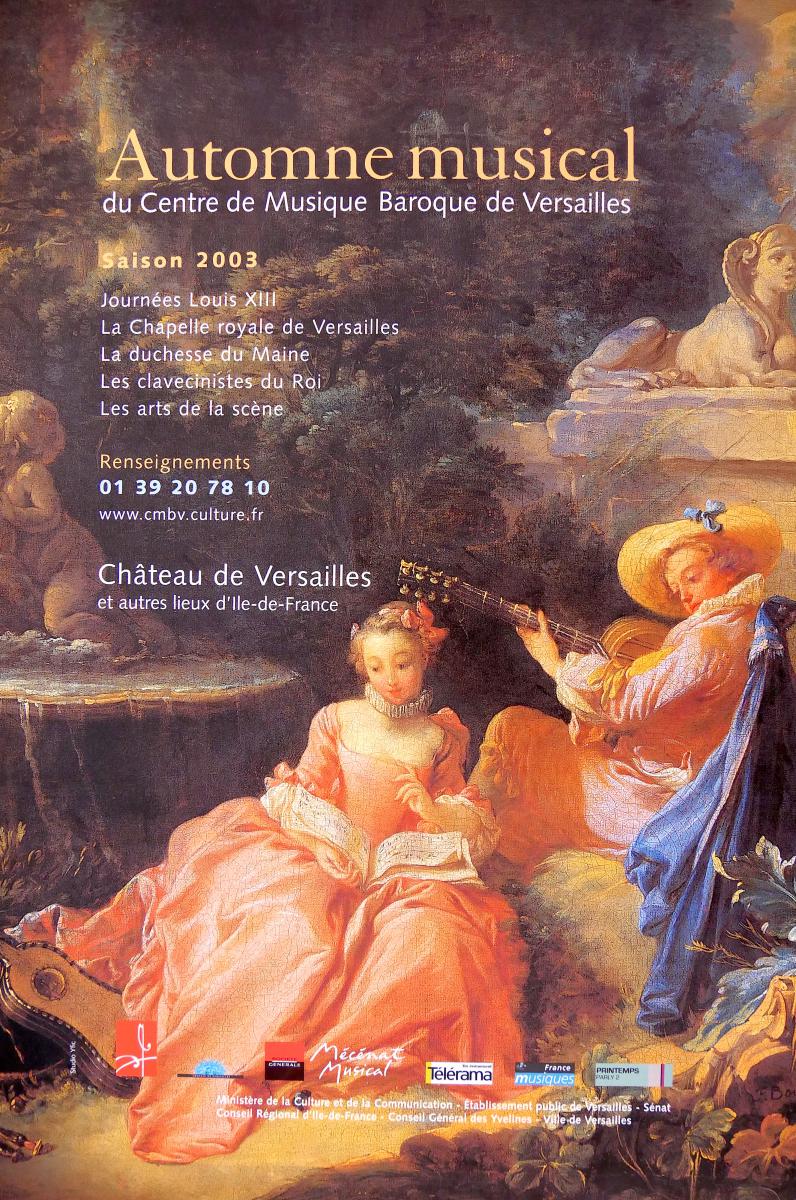
Tri-centenary celebrations of the death of Marc-Antoine Charpentier
2004
17th and 18th century French musical heritage was given a boost by the tri-centenary of the death of Marc-Antoine Charpentier (1643-1704), to whom the Automne Musical Grandes Journées festival was dedicated. The Ministry for Culture entrusted the CMBV to organise national and international celebrations of the composer’s tri-centenary (via the Comité National Marc-Antoine Charpentier under Catherine Cessac). It involved over 200 concerts, a dozen record releases, 3 volumes of motets and oratorios, 5 new books about Charpentier, 2 international lectures, radio broadcasts, a travelling exhibition, a website and a series of teaching projects designed to explore and promote this leading 17th century composer. Les Pages joined Les Arts Florissants to perform a production of Charpentier’s church opera David et Jonathas conducted by William Christie, which took the choirs from the Paris Cité de la Musique all the way to Latin America.
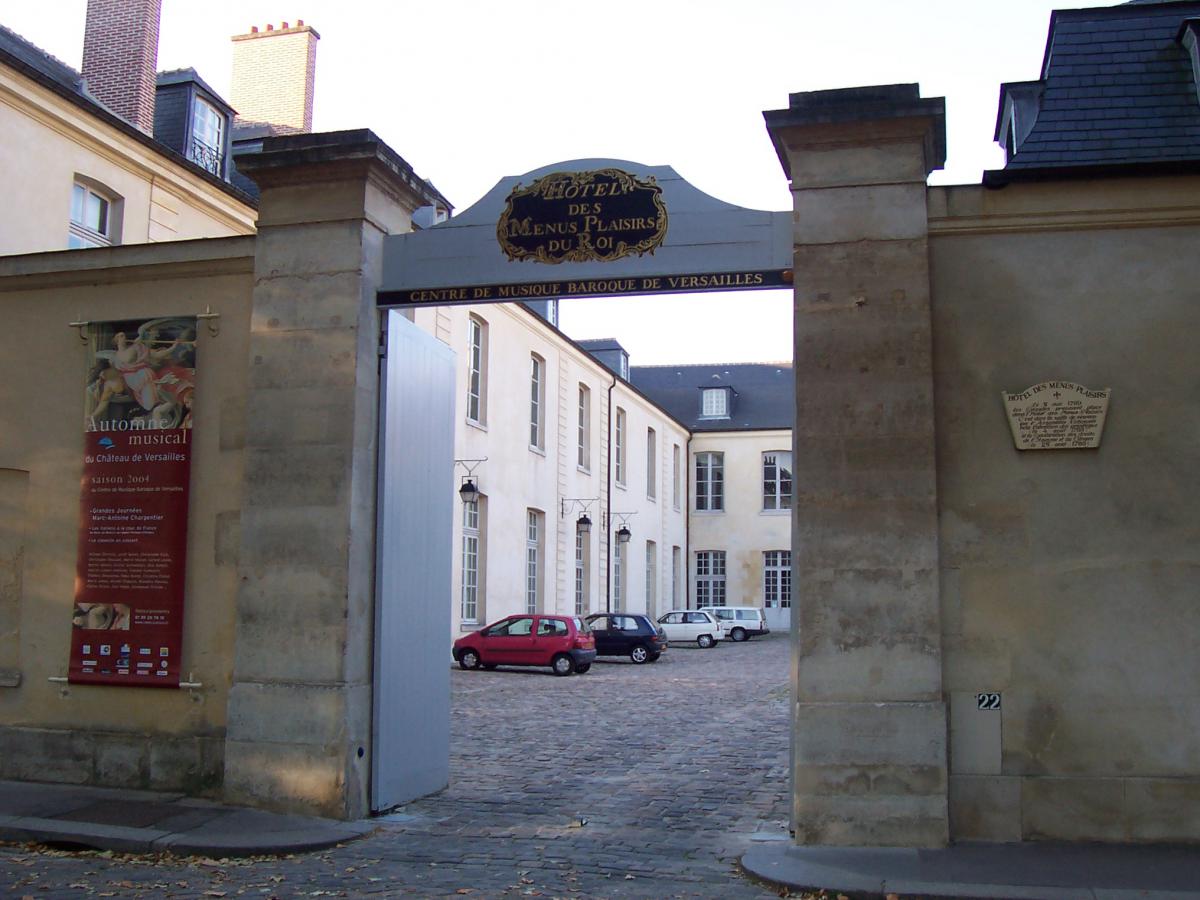
Grandes Journées spotlight on Jean-Marie Leclair
2005
Vincent Berthier de Lioncourt, CMBV founder and director, left his post, to be replaced by Hervé Burckel de Tell who initiated changes to the musical season. He moved some concerts from the Palace into the city of Versailles, created music sessions for younger audiences and increased the number of audio-visual transmissions. The CMBV started collaborating with Arte and Mezzo TV channels, the former featuring a documentary about the Grandes Journées Marc-Antoine Charpentier 2004 and a programme about Marie-Antoinette. The latter featured a series about the CMBV. There followed the release of DVDs about Versailles music venues - the first one featuring arias and symphonies by Gossec and Grétry recorded in the Petit Théâtre de la Reine, and a documentary about its history. The Grandes Journées spotlighted Jean-Marie Leclair, an early 18th century composer. It offered a chance to hear his only opera Scylla et Glaucus, as well as his instrumental compositions dominated by a virtuoso violin.

Grandes Journées spotlight on Marin Marais et Mozart
2006
The CMBV reviewed its activities. To allow les Pages more coaching time, the choir school arranged for classes to start from Primary 2. The season opened for the first time in the city of Versailles, with a series of Fêtes baroques concerts to attract local audiences. Automne musical presented the career of Marin Marais, founder of the French viola academy under Louis XIV. His opera Sémélé was performed at the Théâtre des Champs-Elysées, drawing new audiences. The Grandes Journées ‘Mozart à Paris’ formed part of the celebrations in France and abroad commemorating the 250th anniversary of the composer’s birth. With the ballet Les Petits Riens, the CMBV broadened its remit to embrace the performing arts, reconstituting a 18th century stage set according to the techniques of the time. Finally, in conjunction with the Establishment of Versailles, the CMBV provided the soundtrack for the Grandes Eaux Musicales, and performed the Grandes Eaux Nocturnes as in 2004 and 2005.
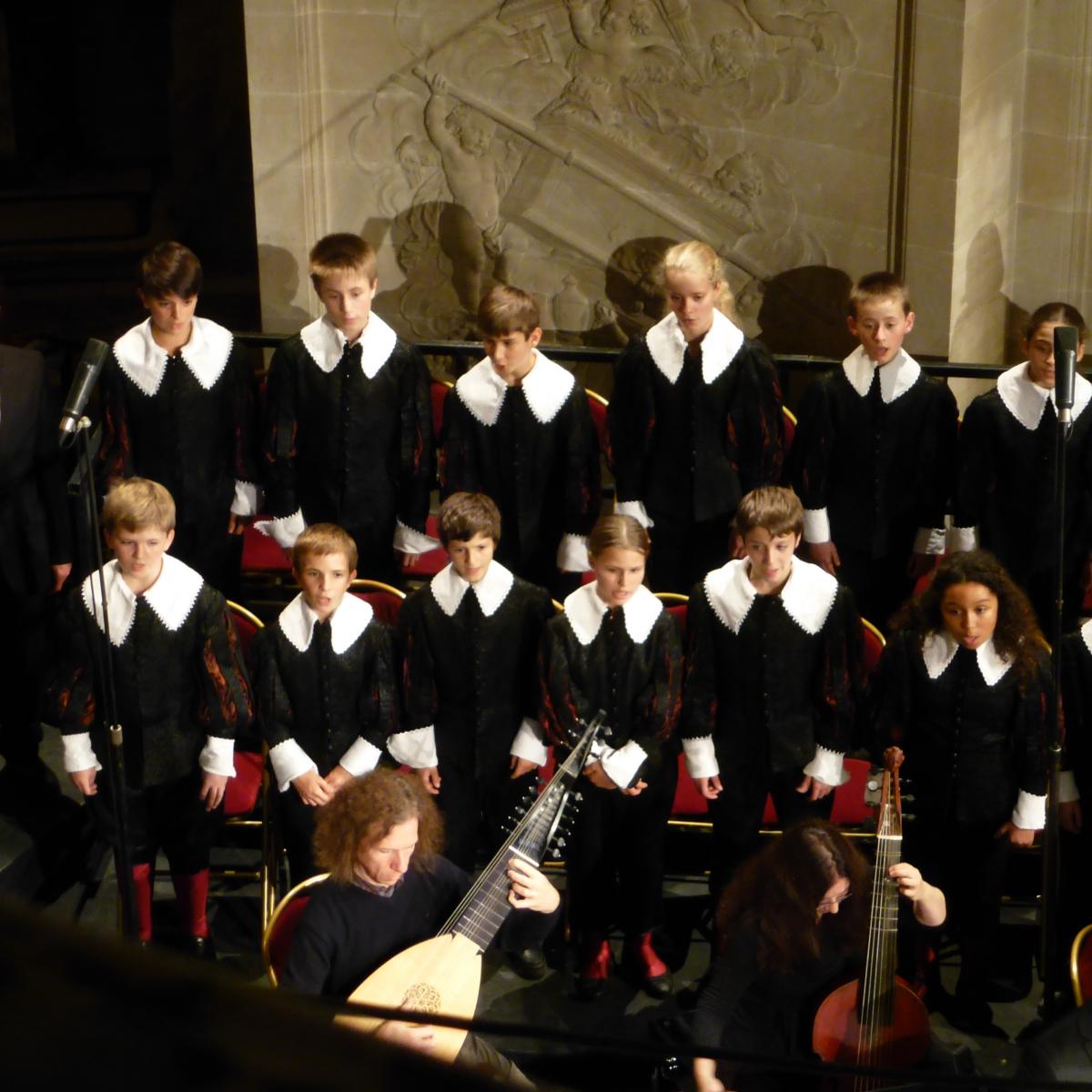
The CMBV 20 years on
2007
Twenty years since the start of the CMBV! To mark the event, 106 concerts were organised, comprising 37 baroque ensembles and orchestras, 6 choirs, 4 dance troupes and around 200 instrumental and vocal soloists. 60 conferences accompanied the concerts. The events were staged in Versailles Palace and city venues. An international symposium, Le Prince et la musique, was co-organised by the CMBV and the Centre de Recherche du Château de Versailles, to explore the French musical style first played at the Versailles royal court. The CMBV brought out a 20 CD box set entitled ‘200 ans de musique baroque à Versailles’. Four books co-published by Mardaga in the Regards sur la Musique collection included scientific texts from the programme booklets. Along with this, the Versailles city library hosted an exhibition entitled ‘Versailles et la musique de cour’, and Olivier Beaumont published his lavishly illustrated La Musique à Versailles.
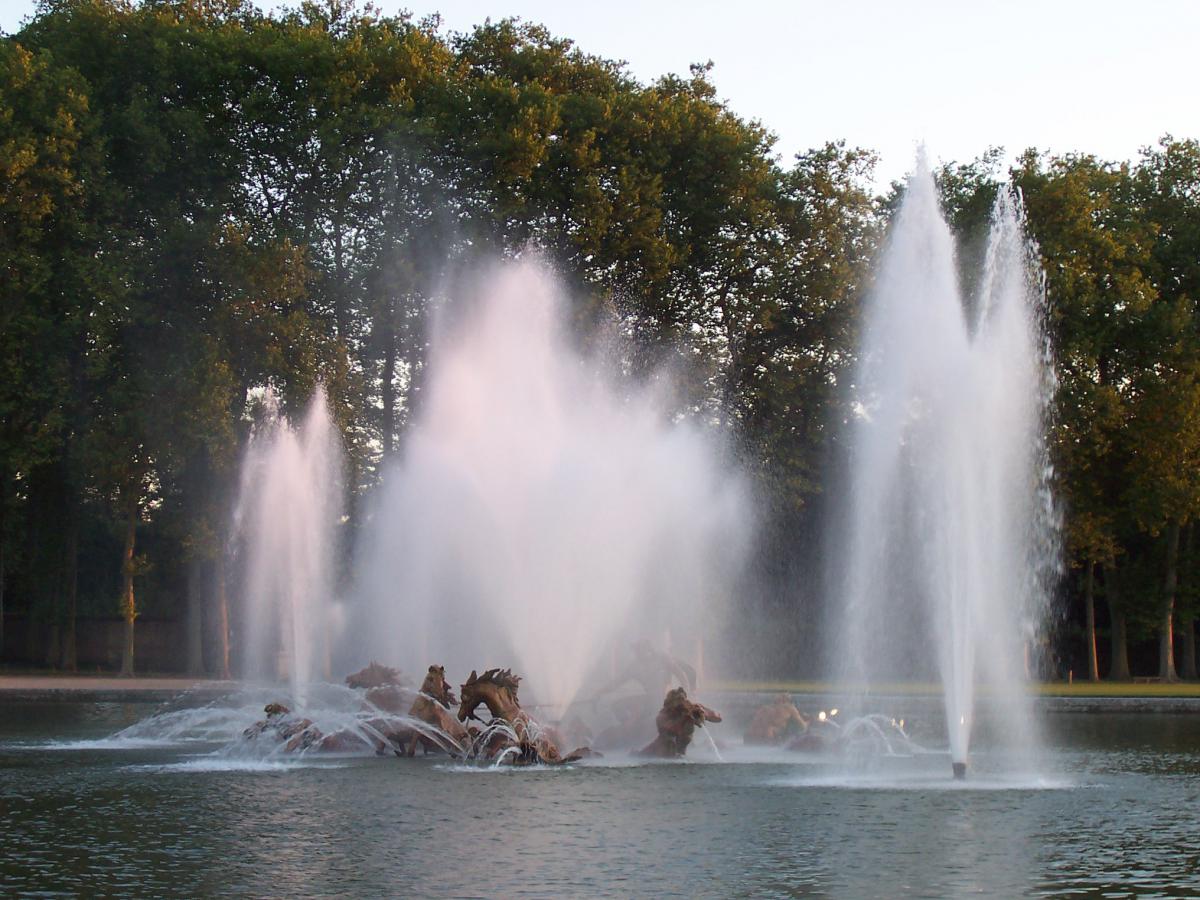
the resurrection of the Vingt-quatre Violons du Roi; Grandes Journées spotlight on Jean-Baptiste Lully
2008
The CMBV embarked on a project to recreate a 5-part French style orchestra comprising dessus, hautes-contre, tailles, quintes and bass violins. These instruments had given way to the classic quartet (violin, alto, cello and double bass), which cannot render the harmonies of Lully’s historic orchestra. Antoine Laulhère and Giovanna Chitto, 17th and 18th century lute craftsmen, have reproduced the instruments that made up the Vingt-quatre Violons du Roi, which are now brought to life by the Folies Françoises ensemble.
The CMBV choir school continued to expand its teaching role, taking on a children’s choir - 130 pupils from the Ecole Wapler in Versailles and the Academy of Equestrian Arts run by Bartabas.
The Grandes Journées featured Jean-Baptiste Lully, with the focus on his little-known early years at the Royal Court. His first operatic work Cadmus et Hermione, co-produced by the French Opéra-Comique, marked the occasion.
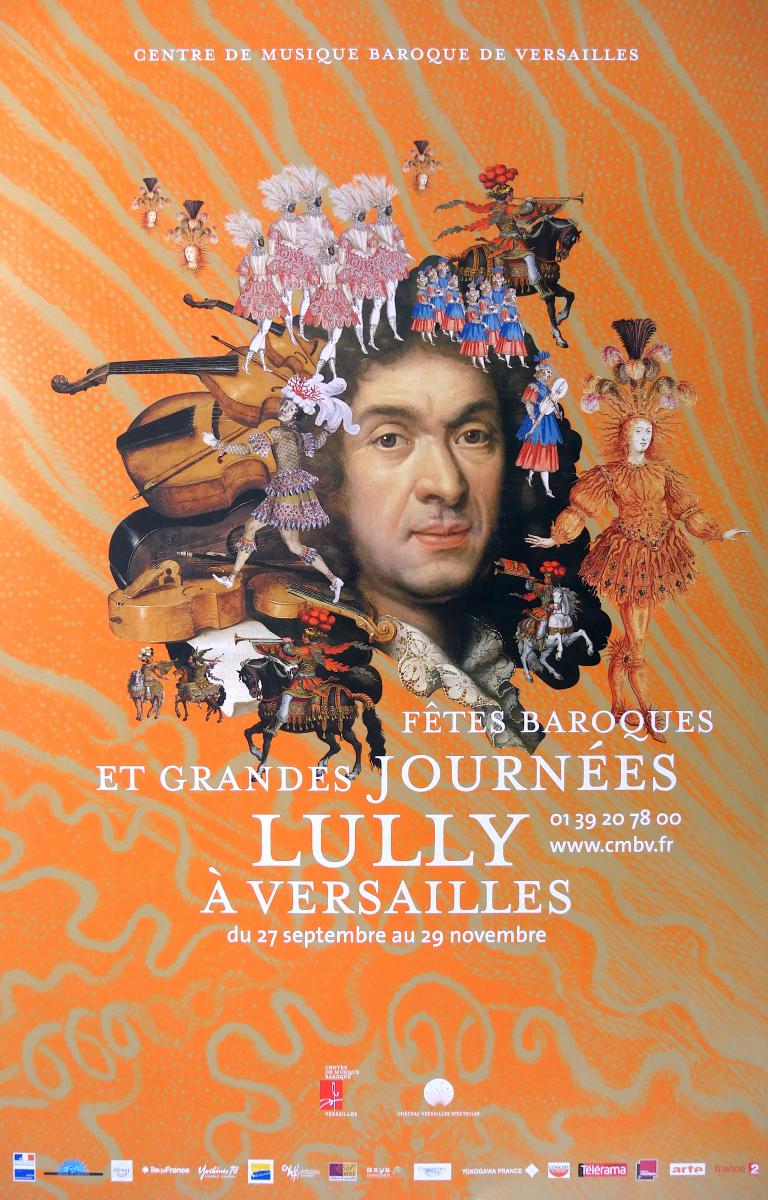
Grandes Journées spotlight on Grétry
2009
The research department took on the supervision of theses and the co-organising of seminars with Paris-IV-Sorbonne university; it also offered its research findings to the Ecole Française in Rome, worked on 17th and 18th century French church music with 5 French research labs (the MUSEFREM project). The CMBV choir school ran teaching programmes with the Versailles and Orsay Conservatoires, awarding 5 music diplomas in baroque song and working with student musicians and singers. Fetes baroques concerts accompanied the stunning exhibition at the Palace of Versailles (Louis XIV, l’Homme et le Roi), featuring grands motets by Desmarest, Lully, Rameau and Campra, conducted by William Christie. The Grandes Journées celebrated Grétry, an emblematic late 18th century figure and favourite composer of Marie-Antoinette. Keen to include the performing arts, the CMBV invited young choreographer/dancers Cécile Roussat and Julien Lubeck to come up with a fantasia combining dance, circus arts and pantomime based on the Beauty and the Beast, the theme of Grétry’s opera Zémir et Azor.

Fêtes baroques ; Grandes Journées spotlight on André Campra
2010
The year opened with the CMBV Chantres choir singing Lully’s Amadis conducted by Olivier Schneebeli at the Avignon and then at the Massy opera theatre. Four of the Fêtes baroques concerts were specially organised to celebrate the 400th anniversary of the death of Henri IV: les Pages & les Chantres sang chamber music and sacred music sung, then airs de cour and there was a Henri IV period ball performed by Doulce Mémoire. The CMBV choir school became involved in teaching projects and partnerships with other institutions, reaching out to new audiences – professional and mainstream musicians as well as publics with limited access to baroque music. A choral workshop opened in the women’s prison at Versailles and the Chantres choir gave a baroque concert in Poissy prison. The Grandes Journées, devoted to André Campra presented hitherto unperformed works and new versions of his greatest masterpieces, notably Carnaval de Venise. An international symposium titled ‘André Campra (1660-1744)- d’Aix à Versailles’ organised by the CMBV research department completed the programme. Finally, the Prix des Muses 2010 paid special tribute to Jean Duron’s work Le Prince et la musique : les passions musicales de Louis XIV, published by Mardaga.
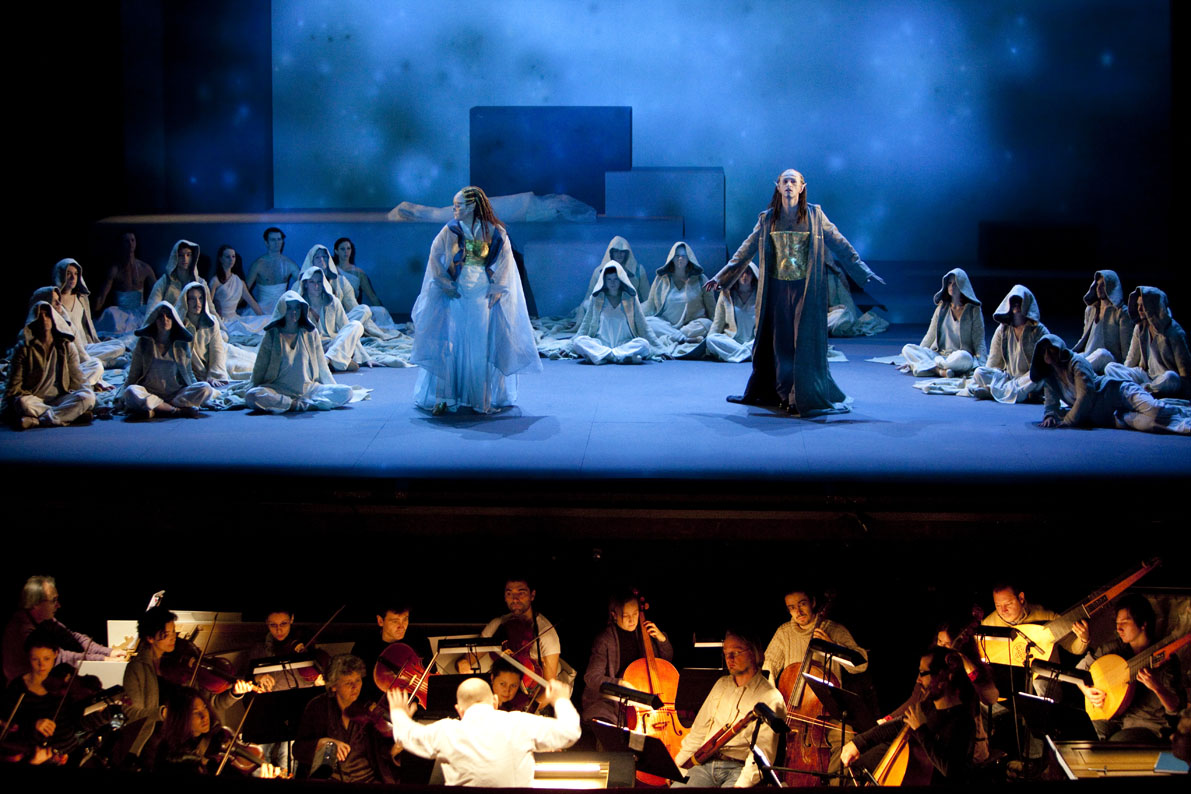
The launch of co-produced revival productions
2011
The CMBV stopped organising concerts. Its artistic production now involved proposing programmes to its partners based on research material and devised in conjunction with musicians.
La musique de la Chapelle du Roi illustrated new interpretations of grands motets by Michel-Richard de Lalande, Henry Desmarest and Guillaume Minoret, performed by les Pages & les Chantres and the Akademie für Alte Musik Berlin, and conducted by Olivier Schneebeli in the Royal Chapel of the Palace of Versailles. Pursuing its collaboration with the Versailles Academy of Equestrian Arts, the CMBV programme featured three shows in the Manège de la Grande Écurie. Bartabas, the famous pioneer of equestrian theatre, improvised performances set to French baroque music.
In the field of research, the CMBV partnered with the University of Clermont-Ferrand, and books and digital publications were produced for the Philidor data base. The final Grandes Journées organised by the CMBV in the Palace of Versailles celebrated baroque/classic composer Antoine Dauvergne. To illustrate the work of this composer of the last baroque tragedies and first classic opéra-comique, the CMBV chose Hercule mourant, La Vénitienne, Polyxène and Les Troqueurs.
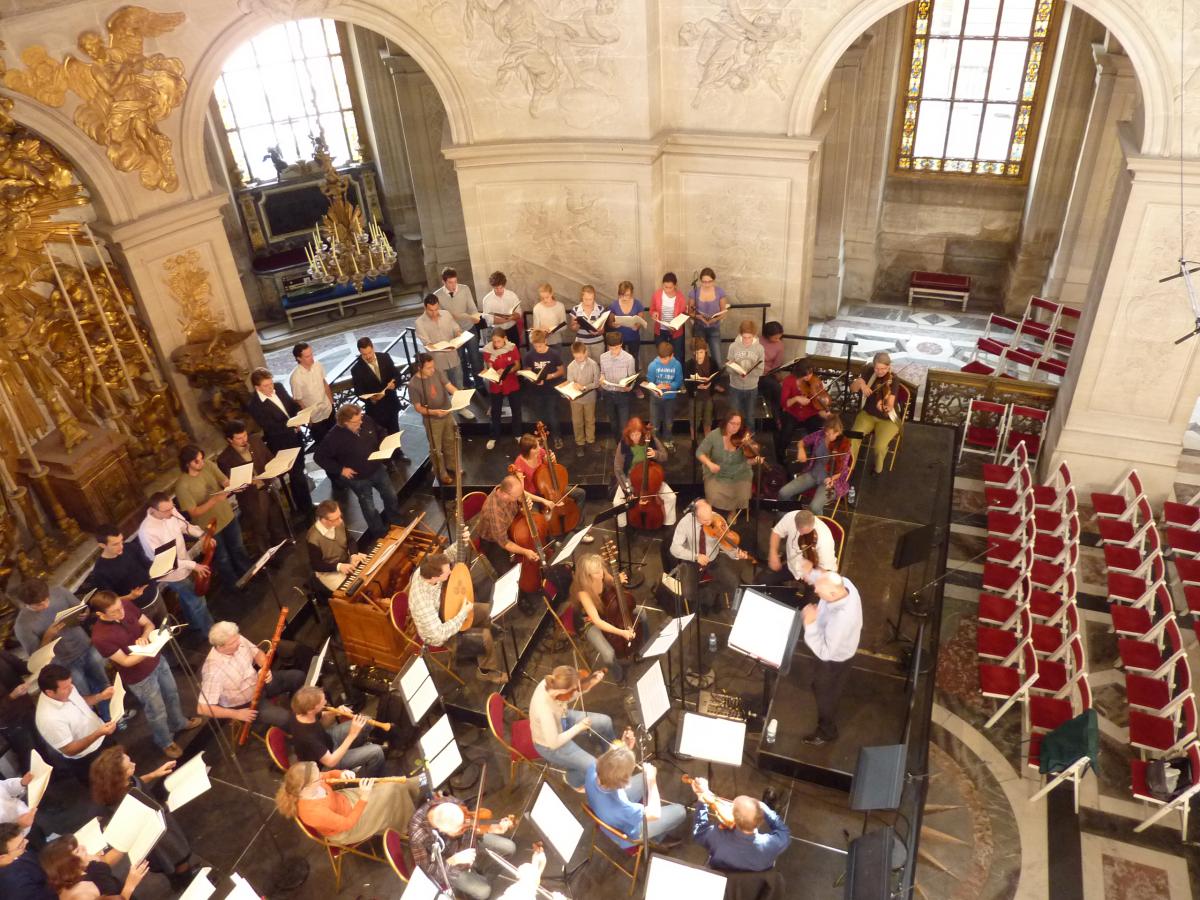
artistic projects outside France; the first Academy of the Vingt-quatre Violons du Roi
2012
Via its partnerships, the CMBV increased the number of concerts and stage productions performed abroad. The year 2012 saw 14 different productions (61 performances) across 28 venues in association with its 21 European partners and co-producers. Four dance performances, including 2 opéras-ballets by Noverre, were premiered with the Opéra-Comique.
Rémy Campos took over as Head of the research department, encouraging cross-cutting projects (with the CNRS and universities of Tours and Clermont-Ferrand). He added new areas of research – theatre, music and dance, performing arts, source analysis, performance practice, etc.
Links between the CMBV choir school and the PSPBB department of early music (Pôle Supérieur de Paris-Boulogne-Billancourt) brought an influx of new choir members to the CMBV for the Jeudis musicaux, professional performances and ornamentation courses. An academy of the Vingt-quatre Violons du Roi was created is association with the Paris CNSMD, Orsay and Versailles conservatoires and the Royal College of Music (London).
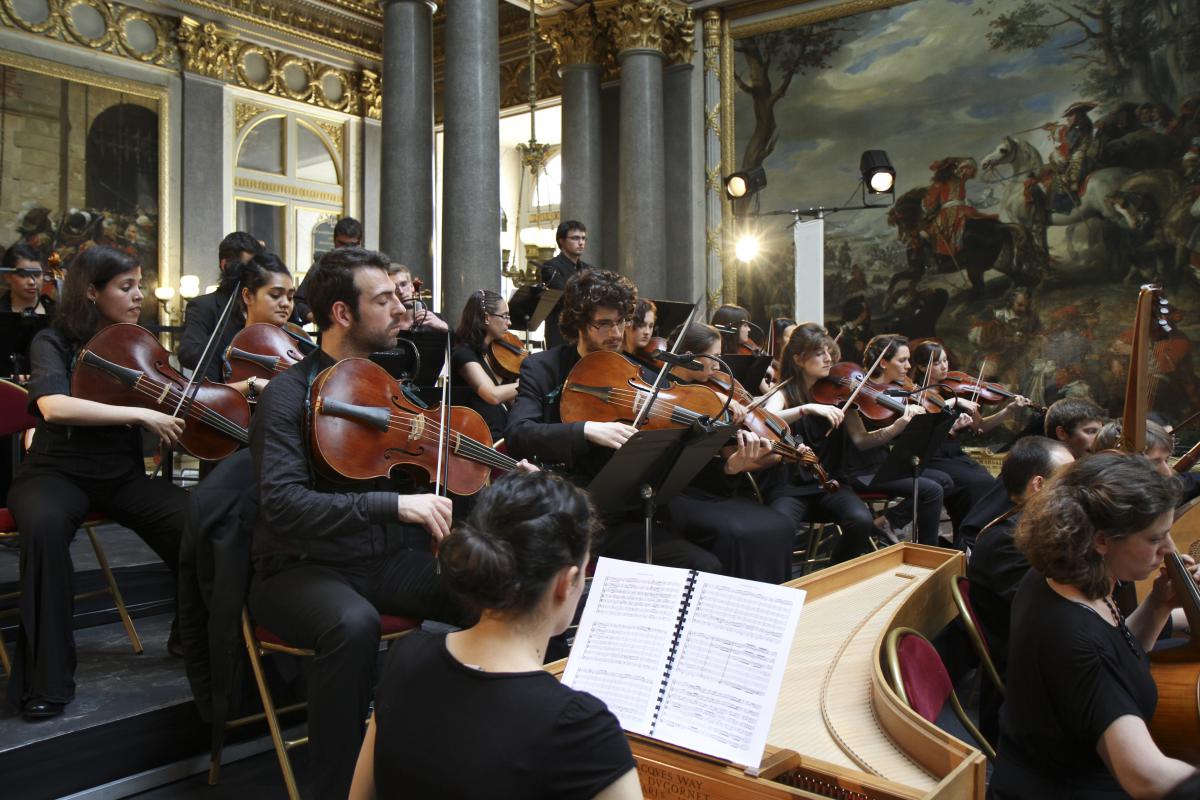
The research department joins forces with the Centre d'Etudes Supérieures de la Renaissance
2013
Started up the previous year, the CMBV research department officially teamed up with the Centre d’études supérieures de la Renaissance (François Rabelais University, Tours) on 1st January 2013. On the strength of this, the CMBV coordinated the launch of several projects with the French national research agency. A major international symposium titled ‘Musique de foi, musique du pouvoir : musiques religieuses d’apparat dans les cours régnantes d’Europe au temps de Louis XIV’ drew experts from all over Europe to Versailles.
Pursuing its policy of showcasing baroque repertoire worldwide, the CMBV produced a revival of Le Ballet des Fées des forêts de Saint-Germain, in the wake of the publication of the same name by CMBV researcher Thomas Leconte (published by Brepols) the previous year.
The CMBV choir school invited schoolchildren to attend its Jeudis musicaux. On 7th February it was awarded the Prix de l’Académie du Disque Charles Cros for its series of records celebrating the 20th anniversary of Les Pages & les Chantres - a compilation of 17th century French sacred musical masterpieces recorded by the choir school (on Emi Virgin, Alpha and K617 record labels).
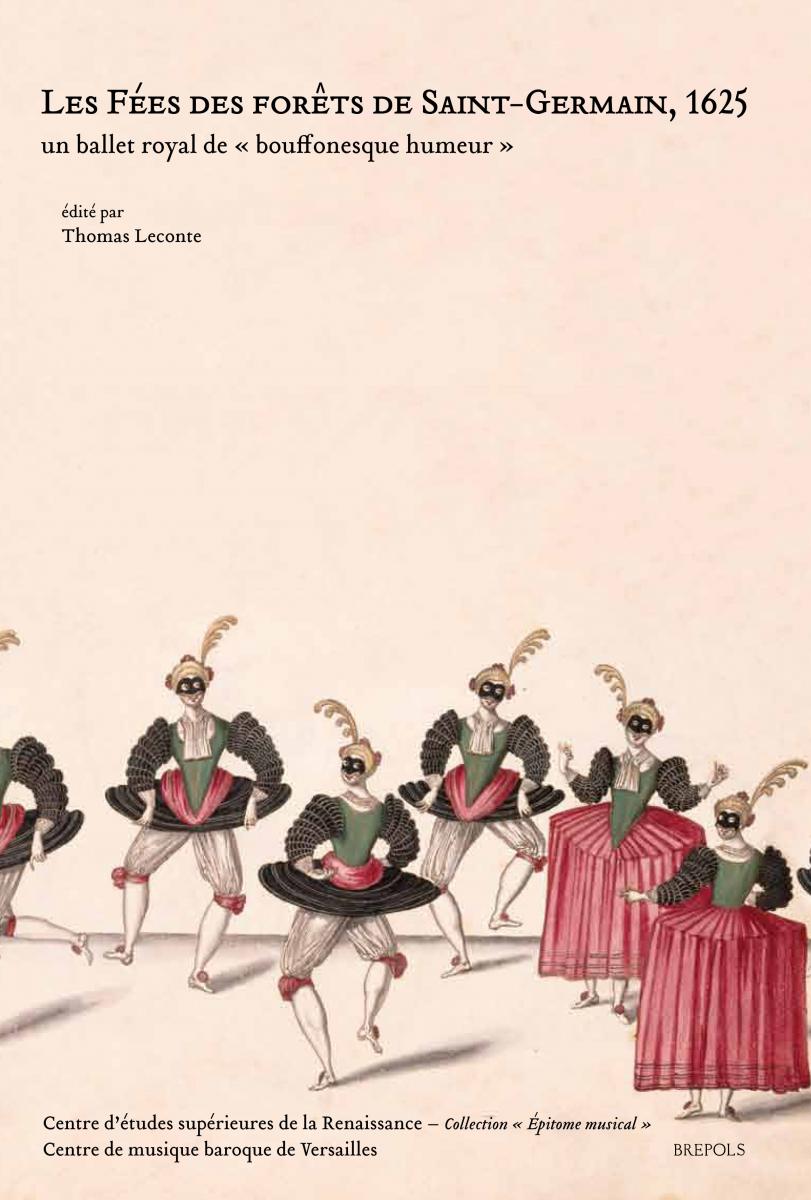
Commemoration of the 250th anniversary of the death of Jean-Philippe Rameau
2014
The Ministry of Culture asked the CMBV to coordinate the 250th Anniversary celebrations of the death of Jean-Philippe Rameau (1683-1764). It devoted its music season to the celebrated composer, which offered an opportunity to shed fresh light on his work, performing classics like Castor et Pollux but also hitherto unperformed later works such as Fêtes de l’Hymen et de l’Amour and Les Fêtes de Polymnie. This resulted in 17 stage productions across 50 different venues, including 5 in China and Russia.
The CMBV launched a reference website (www.rameau2014.fr), providing a wealth of information about the composer and regular updates about events organised or co-organised by the CMBV - concerts, recordings, radio broadcasts, lectures, study days, exhibitions, publications (books and scores), etc.
In September the CMBV choir school ran a PACTE (outreach) class project ‘L’Inde galante, d’après Jean-Philippe Rameau for three classes at Trappes high schools. The music workshop, run by the choir and schoolteachers, culminated in two stage performances on 10th and 12th February 2015 at the Théâtre de la Merise in Trappes and the Royal Opera in Versailles.

French baroque music week in Rio de Janeiro; a new production of Xerse
2015
Branching out worldwide thanks to its partners, the CMBV came up with new projects - a week of baroque musique (classics by Mondonville, Rameau and Leclair) was performed in Rio de Janeiro. Masterclasses were also held with the city’s university’s baroque orchestra and the week ended with two concerts in the Sala Cecilia Mereiles.
CMBV publications were officially presented to the University.
A lavish production of Lully and Cavalli’s Xerse and a series of royal funeral concerts highlighted the 300th anniversary of the death of Louis XIV. From the historic and musical data provided by the CMBV research department, the Saint-Denis festival recreated the stunning pomp and splendour of the court of Louis XIV for the funeral of Queen Maria Theresa of Austria, Queen of France and Infanta of Spain (1638-1683). The performance included plainsong, a mass by composer Charles d’Helfer (Missa pro defunctis) and choral motets (Dies iræ and De profundis by Jean-Baptiste Lully). It was accompanied by an exhibition in the crypt of Saint-Denis cathedral curated by Thomas Leconte, CMBV scientific researcher.
Les Pages & les Chantres joined forces with the Radio France choir school to create an exceptional musical event: both choirs, plus 13 erstwhile Chantres chorists and 20 baroque instrumentalists performed Marc-Antoine Charpentier’s Messe à quatre chœurs and a premiere of Philippe Hersant’s Le Cantique des trois enfants dans la fournaise based on a 17th century text by Antoine Godeau and reproducing Charpentier’s vocal and instrumental spatialization.
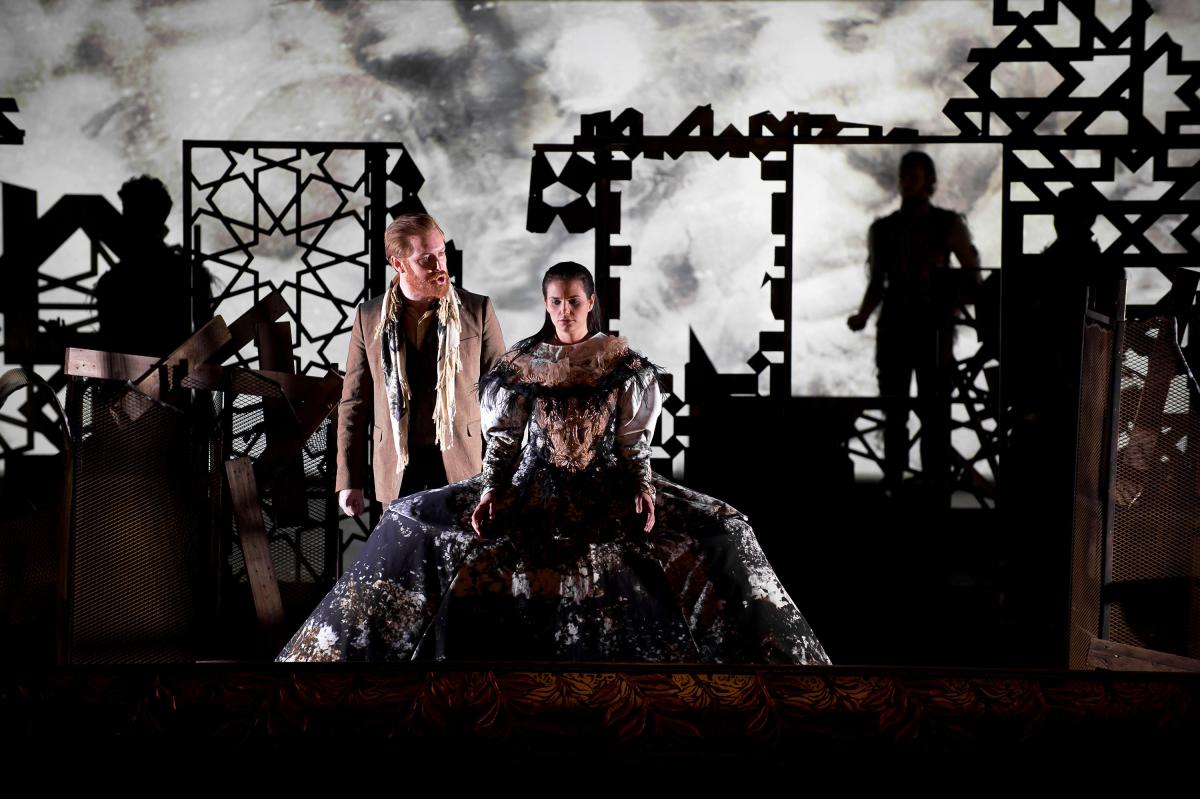
The CMBV choir school tours Korea; launch of the Générations Lully project
2016
Around 30 CMBV productions and co-productions with its 46 partners took place this year across 48 venues. Links were formed with the cites of Prague and Potsdam.
To celebrate the Année France-Korea, the CMBV arranged for les Pages & les Chantres to tour the ‘Land of the Morning Calm’, performing Marc-Antoine Charpentier’s Histoires sacrées. Concerts were held in Suwon, Jeonju, and Tongyeong along with outreach projects designed to introduce French baroque music to Korean musicians and audiences. A course of masterclasses was organised for students and teachers from Seoul’s Hanyang University, and CMBV publications were officially donated to the university library.
Solveig Serre took over as Head of the CMBV research department.
Sadly, Philippe Beaussant (1930-2016) co-founder of the CMBV, passed away this year.
The CMBV embarked on a two-year teaching programme under the auspices of its twinning with the town of Trappes. The Générations Lully project aimed to initiate the Trappes public to French baroque music, culminating in the co-production of a baroque show. The CMBV worked closely with teachers, community players and performing artists. The initial phase involved activities introducing baroque music, with the focus on Jean-Baptiste Lully. There followed a series of workshops, meetings with musicians, guided tours, Jeudis musicaux concerts and shows presenting baroque music in a historical and contemporary context. Invitations were extended to around 1 000 high school pupils, parents, community workers and arts associations.

The CMBV 30 years on
2017
Every year the CMBV expands its artistic remit thanks to its diverse links (in the world of science, with linguistic & artistic coaching, musical scores, archives, costumes, stage sets, instruments and rehearsal venues). It helped organise 150 events across 11 countries. Performances in France included Les Amants magnifiques by Lully and Molière, Chimène ou le Cid by Sacchini and Atys en Folie, as well as Un Opéra imaginaire, an original compilation of extracts from Lully, Campra, Destouches, Marais, Montéclair, Rameau and Dauvergne, etc. and several concerts performances to mark the 30th anniversary of both the CMBV and the Le Concert Spirituel.
The CMBV research department was involved in many scientific projects, notably a major symposium on the teaching of church music from 16th to early 19th century, in collaboration with Blaise-Pascal University in Clermont-Ferrand. There also feature a cross-discipline research seminar intitled ‘Pro Capella Regis – To His Majesty’s Chapel’, a first comparison of the historical, practical and symbolic aspects of chapel repertoires under Louis XIV of France and Charles II of England. To illustrate this, the CMBV choir school performed works by Henri Du Mont, Pelham Humfrey, John Blow and Pierre Robert in the Royal Chapel at the Palace of Versailles.
The CMBV published its ninth and final volume of the works of Sébastien de Brossard, the first in the history of French music publishing to be ranked ‘Édition monumentale’. Over a period of thirty years the CMBV had gradually restored the reputation of Sébastien de Brossard, demonstrating his achievements as composer, theoretician, collector and teacher. In his own time, he introduced German and Italian music to French audiences, and in 1701 he produced the first dictionary of music.
Hervé Burckel de Tell stepped down as Director of the CMBV.
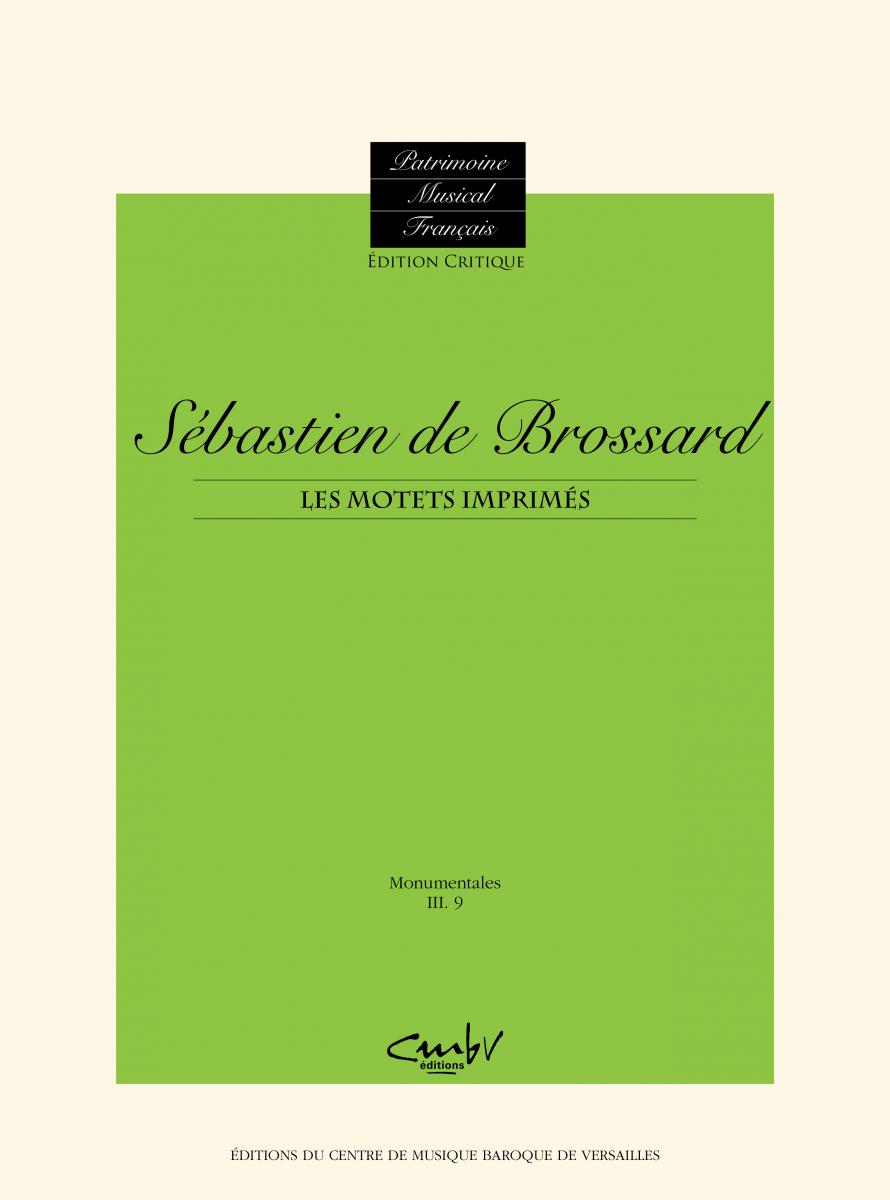
Major operatic productions worldwide
2018
2018 was marked by the arrival of the CMBV’s new General Manager Nicolas Bucher and the retirement of Jean Duron who had founded the CMBV research workshop in 1989. In recognition of his work, colleagues and friends presented him with the compilation Musiques en liberté published by the École nationale des chartes.
New operatic productions took the Centre de musique baroque de Versailles worldwide. It staged Gervais’ Hypermnestre (a major success at the Paris Opera in the 18th century) and Rameau’s Les Indes galantes in Hungary, the 1708 version of Issé by Destouches in France, Campra’s L’Europe galante in Germany and Grétry’s Raoul Barbe-bleue in Norway. At the same time the Salieri project was completed: new productions of three of his operas, the last one Tarare in 2018 co-produced with Christophe Rousset.
A CD recording of three hitherto unpublished grands motets by Michel-Richard de Lalande was released under the Glossa label, featuring Olivier Schneebeli, les Pages & les Chantres and the Collegium Marianum.
The Générations Lully 3-year outreach project involving the town of Trappes was rounded off with a cross-disciplinary spectacle staged at La Merise in Trappes and at the Royal Opera in the Palace of Versailles.
A conference intitled Repenser la musique en France à l’époque baroque was co-organised by the CMBV, IReMus, Paris IV and the Royaumont Foundation. It offered scientists an opportunity to appraise the work done and look into the prospects for research into 17th and 18th century French music.
Pursuing the revival of composer Marc-Antoine Charpentier, the CMBV published two volumes of his 3-part petits motets.
